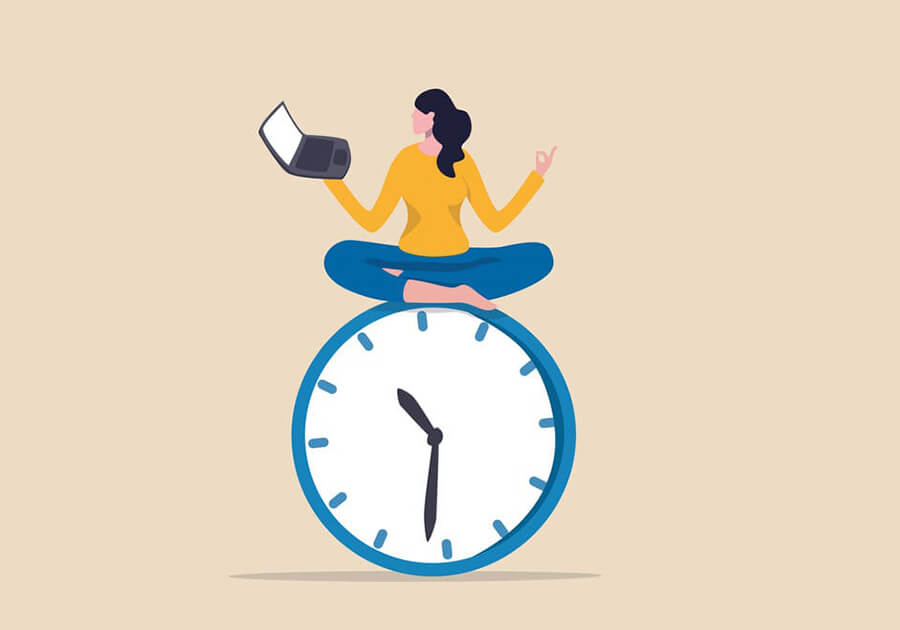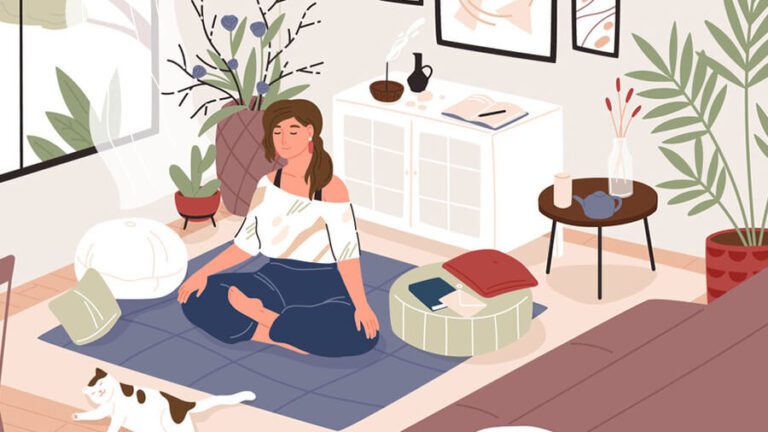Everyone knows that meditating is good for you. It reduces stress, boosts the immune system and increases the flow of oxygen to the brain, and relieves mental fatigue while increasing mental clarity. I’ve started a routine of almost daily meditation sessions, but it wasn’t always easy to start.
Good posture is important for meditation, so make sure that your back is straight but not stiff, and that you’re comfortable. Your hands can rest on your legs or on your lap, whichever feels more natural.
Close your eyes if you find it more comfortable that way — it can help block out distractions — but it’s not necessary. It’s normal for your mind to wander when you first start meditating. It’ll get easier with practice.
Here are 4 ways that have helped me overcome obstacles with meditation and make it easier to get started and stick with this practice.
1 – Work With Your Brain
Meditation is a great tool for managing the monkey mind. But it isn’t always easy to stay focused or committed. One of my favorite tricks for staying focused during meditation is to give the mind a job. For example, as you sit and begin your meditation, count your breath. Count each inhalation and exhalation. If you drop the count, start over again.

Another simple trick is to name each sensation that arises in your mind. Rather than being drawn into the sensation, simply observe it and name it silently to yourself — sight, sound, hearing, thought, desire, aversion. This can help you develop concentration because you are giving the mind something to focus on while meditating.
2 – Use Imagery
A great way to practice meditation is by using imagery, explains Dr. David Wechsler. “Focusing on a mental image is an easy way to help you become more mindful,” she says. Visualize a place or a person that brings you joy, or even something as simple as your breath. By focusing on a single image, you’ll be better able to train your mind to quiet down and move away from distracting thoughts.

Or else, A good way to start is by visualizing yourself meditating — see yourself sitting comfortably, breathing easily, feeling relaxed and at peace — then imagine yourself doing the same thing while you’re meditating. This will help you get into it more quickly and make it a more rewarding experience.
3 – Saying it out loud
There’s an immense difference between thinking something and saying it out loud. This is especially true when you’re meditating because it’s just you and your thoughts — no one else around.
If your mind is racing with worries, say them out loud to yourself. You don’t have to speak in some fancy way; just say what you’re worried about in plain language.
This technique works because you can’t think of two things at once. When you’re saying something out loud, your mind can’t focus on other thoughts at the same time.

That’s why meditation teachers will sometimes lead their students through guided meditations where they repeat phrases like “I am powerful, healthy, and happy” or “I am grateful for my family, friends, and career.”
Meditation is about being more mindful — about paying attention to what’s happening right now instead of worrying about what’s coming next.
So when you’re feeling stressed, take a moment and say those words out loud: “I am mindful” or “I am peaceful” or “I am strong.” It sounds silly, but science shows that saying something out loud makes it much easier to believe — which means you’ll achieve some of the effects of mindfulness.
4 – You believe you don’t have time.
Don’t be intimidated by the prospect of a 30-minute session — that’s not necessary when you’re just starting. Start with two minutes. That’s how long it takes for your brain to shift from beta waves (the ones that sustain ordinary consciousness) to alpha waves, which signal a deeper state of relaxation.
Two minutes is enough to feel the benefits, so start small and grow from there. Break it up into smaller chunks throughout the day it will help. You can extend your meditation once you learn the basics.

So there you have it, our best tips on how to make meditation easier. Ideally, you can use these insights to help you reach a more profound state of meditation each and every time you sit down to practice. Don’t strain yourself trying to force your mind into submission either—your goal should be relaxation and tranquility, not harsh self-judgment.





[…] I can understand for some people making time for themselves in their regular life is kind of difficult. To over come those problems take a read on other article How to Make Meditation Easier – 4 Potential Roadblocks And How To Overcome Them […]
Top site ,.. amazaing post ! Just keep the work on !
[…] more flexible can help with your overall fitness and well-being. Stretching exercises such as yoga, Pilates, and tai chi can help to improve your range of motion and help you become […]